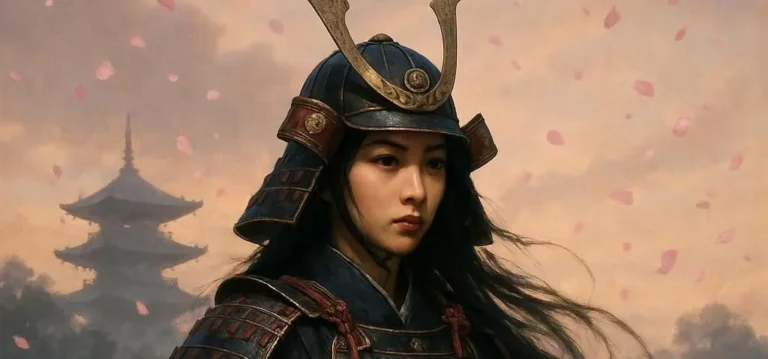512 views Yakuza vs. Tokuryū: Conflict, Cooperation, and the Blurring Lines Between Them
The Yakuza and the Tokuryū, two of Japan’s most infamous criminal organizations, have long been synonymous with power, intrigue, and a complex web of alliances and rivalries. While the Yakuza is one of Japan’s oldest and most storied organized crime syndicates, the Tokuryū, also known as the Yamaguchi-gumi’s Tokushin-kō, represents a new wave of organized crime that has shaken the foundations of Japan’s underworld. This blog post delves into the conflict, cooperation, and the increasingly blurred lines between these two criminal entities, exploring their historical origins, their operational differences, and the reasons behind their shifting dynamics.
A Brief History of the Yakuza
The Yakuza, Japan’s most well-known criminal organization, has a history that dates back to the 17th century. Originating from the Edo period, the Yakuza was initially composed of two groups: the Tekiya (peddlers and street vendors) and the Bakuto (gamblers). These groups formed the basis of what would evolve into the modern Yakuza, a highly structured and hierarchical organization with a strict code of conduct known as Giri and Ninjō (duty and humanity).
Over time, the Yakuza expanded its influence, becoming a major player in Japan’s criminal underworld. Its activities range from extortion, gambling, and drug trafficking to more legitimate business ventures such as real estate and construction. The Yakuza’s influence extended beyond the criminal world, with ties to the Japanese government, businesses, and even the entertainment industry.
The Rise of the Tokuryū
In contrast, the Tokuryū, which translates to ‘“the Majestic Dragons,”’ is a relatively newer addition to Japan’s criminal landscape. Formed in the 1980s as a subgroup of the Yamaguchi-gumi, the largest Yakuza syndicate, the Tokuryū was established with the aim of modernizing the Yakuza and adapting to the changing times. Unlike the traditional Yakuza, which operates under a strict hierarchical structure and adheres to a code of honor, the Tokuryū is seen as more pragmatic and ruthless, willing to break with tradition to achieve its goals.
The Tokuryū’s rise to prominence was largely due to its ability to exploit the opportunities presented by Japan’s economic boom in the 1980s. The group quickly gained notoriety for its aggressive tactics, including the use of violence to eliminate rivals and expand its influence. Its membership increased rapidly, and by the 1990s, the Tokuryū had become a dominant force within the Yamaguchi-gumi, leading to a period of internal strife and conflict within the organization.
Conflict Between the Yakuza and Tokuryū
The relationship between the Yakuza and the Tokuryū has been fraught with tension and outright conflict over the years. The traditional Yakuza hierarchy, with its emphasis on loyalty and respect for tradition, has often clashed with the Tokuryū’s more modern and aggressive approach. This tension reached a boiling point in the 1990s, when the Tokuryū’s leadership sought to modernize the Yamaguchi-gumi and expand its operations, leading to a series of internal power struggles.
One of the most significant conflicts between the Yakuza and the Tokuryū occurred in the late 1990s, when a faction within the Yamaguchi-gumi, led by the Tokuryū, sought to oust the organization’s traditional leadership. The conflict, which became known as the ‘Yamaguchi-gumi Crisis,’ resulted in a violent power struggle that lasted several years and left numerous casualties on both sides. The conflict not only weakened the Yamaguchi-gumi but also had a ripple effect throughout the Yakuza, leading to a period of instability and fragmentation within the organization.
Cooperation and the Blurring Lines
Despite the conflict, there have been instances of cooperation between the Yakuza and the Tokuryū, particularly in certain regions where their interests have aligned. For example, in the late 2000s, the Yakuza and the Tokuryū worked together to exploit the lucrative methamphetamine trade, which had become a major source of income for both organizations. This cooperation was largely driven by the mutual desire to capitalize on the lucrative drug trade and to counter the growing influence of foreign drug cartels in Japan.
However, the lines between the Yakuza and the Tokuryū have become increasingly blurred in recent years, making it difficult to distinguish between the two groups. This blurring of lines is largely due to the Tokuryū’s integration into the Yakuza hierarchy, as well as the increasing overlap in their activities and operations. The Tokuryū’s aggressive tactics and modern approach have influenced the Yakuza, leading to a more pragmatic and adaptable organization that is willing to break with tradition to achieve its goals.
Moreover, the influence of the Tokuryū has extended beyond the Yakuza, with elements of its approach being adopted by other criminal organizations in Japan. This has led to a more fluid and dynamic criminal landscape, where the boundaries between different organizations are increasingly fluid and constantly shifting.
The Implications of the Yakuza-Tokuryū Dynamic
The dynamic between the Yakuza and the Tokuryū has significant implications for Japan’s criminal underworld, as well as for the country’s broader society. The increasing influence of the Tokuryū and its integration into the Yakuza hierarchy suggests a shift toward a more modern and aggressive form of organized crime, one that is more willing to break with tradition and adopt new tactics to achieve its goals.
This shift has important implications for law enforcement in Japan, which has long struggled to combat organized crime. The Yakuza’s traditional hierarchical structure and code of conduct made it somewhat predictable and easier to target. The Tokuryū’s more fluid and adaptable approach, however, poses new challenges for law enforcement, which must now contend with a more dynamic and unpredictable criminal landscape.
Furthermore, the increasing overlap between the Yakuza and the Tokuryū raises questions about the future of organized crime in Japan. Will the Tokuryū’s influence continue to grow, leading to a more modern and aggressive form of organized crime, or will the traditional Yakuza hierarchy reassert its dominance? The answer to this question will have important implications for both the criminal underworld and the broader society in Japan.
The Future of the Yakuza and Tokuryū
As the Yakuza and the Tokuryū continue to evolve and adapt to the changing times, their relationship is likely to remain a key factor in shaping the future of organized crime in Japan. The Tokuryū’s influence within the Yakuza is likely to continue growing, leading to a more modern and aggressive form of organized crime. However, this shift is unlikely to come without conflict, as the traditional Yakuza hierarchy seeks to resist changes to its structure and code of conduct.
Moreover, the increasing overlap between the Yakuza and the Tokuryū raises questions about the future of organized crime in Japan. Will the Tokuryū’s influence lead to a more fluid and dynamic criminal landscape, or will the traditional Yakuza hierarchy reassert its dominance? The answer to this question will have important implications for law enforcement, which must now contend with a more unpredictable and adaptable criminal underworld.
In addition, the changing dynamics of organized crime in Japan are likely to have implications beyond the country’s borders. As organized crime becomes more globalized, the Yakuza and the Tokuryū are likely to play a significant role in the global criminal landscape. Their ability to adapt and evolve will determine their long-term success and influence.
Key Takeaways
Conflict and Cooperation: The relationship between the Yakuza and the Tokuryū has been marked by both conflict and cooperation, driven by competing interests and the need to adapt to changing circumstances.
Blurring Lines: The lines between the Yakuza and the Tokuryū have become increasingly blurred, with the Tokuryū’s influence leading to a more modern and aggressive form of organized crime.
Implications for Law Enforcement: The shift toward a more fluid and dynamic criminal landscape poses new challenges for law enforcement, which must now contend with a more unpredictable criminal underworld.
The Future of Organized Crime in Japan: The future of the Yakuza and the Tokuryū will be shaped by their ability to adapt to changing times and their willingness to break with tradition.
Conclusion
The dynamic between the Yakuza and the Tokuryū represents a fascinating and complex chapter in the history of organized crime in Japan. From their historical origins to their modern-day dynamics, the relationship between these two criminal entities continues to shape the criminal landscape of Japan. As the Yakuza and the Tokuryū evolve and adapt to the changing times, their relationship is likely to remain a key factor in shaping the future of organized crime, both in Japan and beyond.
The conflict, cooperation, and blurring lines between the Yakuza and the Tokuryū offer valuable insights into the evolving nature of organized crime and the challenges it poses for law enforcement and broader society. Understanding this dynamic is essential for anyone seeking to grasp the complexities of Japan’s criminal underworld and its role in the global criminal landscape.






